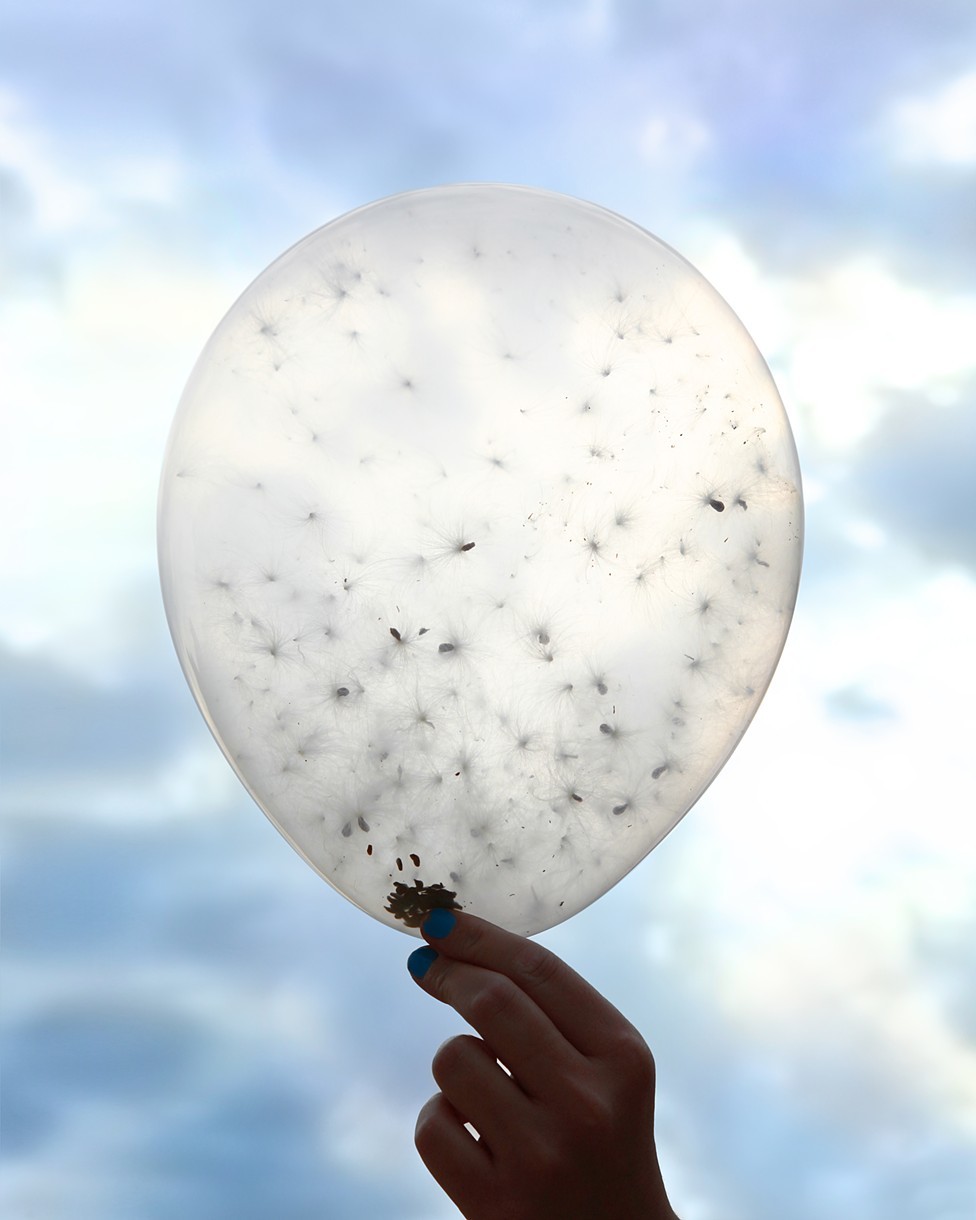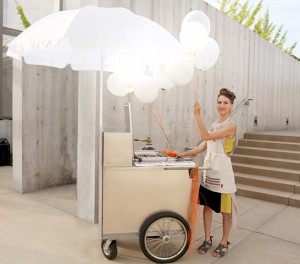
How artists and environmental activists both do better together
Art has long been a catalyst for social change, from the anti-war efforts of the Dadists during World War I to the music of Nina Simone during the 1960’s civil rights movement. Today, cause-related groups are exploring using culture to broaden their reach and impact beyond what is possible with conventional advocacy methods. The National Domestic Workers Alliance, for example, leveraged the attention around the movie The Help to launch a culturally based advocacy campaign for the Domestic Workers Bill of Rights in California, which contributed to it passing in 2013. From the National Day Laborers Organizing Network to the DREAMers, organziations are recognizing the power of art as a way to move people. On the artist side, there have always been artists who have sought to contribute, through their art, to issues they care about. The environment is a particularly fast growing and urgent area of interest and is leading to a growth in artist demand for academic programs and residencies that can help facilitate this work. Yet within large-scale environmental organizations, relationships between artists and organizations, if they exist, are still typically one-off projects, or involve bringing artists or artistic work in at the late stages of an advocacy campaign to add creative elements. Jenny Kendler’s residency with the Natural Resources Defense Council is an attempt to develop a different residency model where the artist is fully embedded within the organization and works collaboratively with the organization over a long period of time. Jenny and Elizabeth Corr from the NRDC tell their story here. – Alexis Frasz, Editor
By Jenny Kendler and Elizabeth Corr
For a number of years, artist Jenny Kendler had been searching for a science-based or activist organization with an artist-in-residence program as a way to explore her interest in environmental themes. Having had little luck in her quest for formal programs, Jenny’s interest was piqued in the fall of 2013 at the EXPO CHICAGO international art fair, where she saw that the environmental non-profit Natural Resources Defense Council (NRDC) was an exhibitor. NRDC’s show included artwork by Maya Lin and Gordon Matta-Clark, and was distinctively different from the other art/activism partnerships that she had seen, which had tended to use artwork solely for marketing or design purposes.
Elizabeth Corr, the staff member who had curated the show and was manning the table, had been quietly working behind the scenes at the NRDC to figure out how the organization could work with artists and make it a fruitful partnership for both parties. Jenny introduced herself as an artist interested in environmental issues, and out of this connection, six months later, NRDC’s Artist-in-Residence program was born.
NRDC had been implementing a wide variety of tools to tackle complex environmental problems, ranging from scientific research and data modeling to policy advocacy and litigation. But Elizabeth wondered about other strategies that could build awareness of and action on important environmental issues by the general public.
Elizabeth’s vision was to establish a residency that would invest in a long-term relationship with an artist fully embedded in the organization. This had two equally important goals:
- To support artists interested in the environment for a meaningful length of time
- To enhance the effectiveness of NRDC’s advocacy as a result of creative approaches developed by the artist and the organization working deeply in partnership
With this, NRDC became the first large-scale environmental organization to have a resident artist working side-by-side with program staff.
Jenny’s residency, which continues through July 2016, provides her with access to NRDC’s office, key program staff, data and other valuable resources that would normally be inaccessible to artists interested in environmental themes. She has the ability to participate in staff meetings, conference calls, planning sessions and program retreats to the extent she desires. Perhaps most importantly, the residency is structured to be collaborative in nature — not just an artist working independently within an organization. Because of their aligned values, excellent communication and the trust and generosity of other NRDC team members, Jenny is able to harness her unique creative talents in ways that help animate and translate NRDC’s priority areas for a broader public audience.
One of the first projects that Jenny worked on with NRDC was Milkweed Dispersal Balloons, included as part of the Marfa Dialogues at The Pulitzer Foundation for the Arts in St. Louis. From an advocacy perspective, the project was intended to raise awareness about the declining population of monarch butterflies and stimulate policy and citizen action.
NRDC scientists and lawyers agreed that one of the most meaningful steps that could be taken to help the monarch population increase its resilience to the stresses of urbanization and agricultural practices was to plant and protect milkweed – the primary source of food for monarch caterpillars. Yet the organization didn’t have a way to convey that information to the public in a way that could spur direct action.
Jenny’s project modified a food cart, transforming it into a mobile oasis that contained information for participants and food for monarchs. Using biodegradable clear balloons filled with floating, fluffy milkweed seeds, visitors to the project were asked to pop the balloons in their neighborhoods to plant the milkweed, thus increasing habitat for the threatened species and, importantly, giving citizens a sense of ownership over the problem.

The project was successful on its own terms as an artwork — traveling to other major museums including The DePaul Art Museum in Chicago and the Albright-Knox in Buffalo, NY, and it was featured in a variety of publications including The Chicago Sun-Times, Chicago Gallery News, and ANTENNAE:The Journal of Nature in Visual Culture. It was also successful as an activist project, inspiring thousands of viewers and participants to take action in their own capacities to protect monarchs, and even leading to some major policy wins. For example, after reading about the project in an NRDC publication, Tom Weisner, the Mayor of Aurora, Illinois, worked to stop the Illinois tollway from mowing almost 300 miles of highway in the state, thus allowing milkweed to thrive and creating a critical habitat for migrating monarchs. This creative approach allowed people to learn about an urgent environmental issue on their own terms in a fun and engaging manner, as opposed to being told by an environmental organization what they should do or not do. This shift in dialogue helped viewers make their own emotional connection to monarchs and inspired them to take action.
The NRDC Artist-in-Residence program works because it is structured around what artists need to thrive and do their best work. Jenny isn’t tasked with specific projects (like: “make a whale banner”). She isn’t required to keep to a schedule or work on only one topic. Instead she can be a ‘floating’ member of the NRDC team, first in NRDC’s Land and Wildlife Program and now with its Water Program. As a result, she is able to follow her natural curiosity and aesthetic sensibilities, while having access to some of the foremost experts on environmental issues — which drives her conceptual and research-driven artistic practice.
The residency is supported by grant funding secured by NRDC which provides for art project expenses and travel for research and speaking engagements, along with a stipend for Jenny. Elizabeth serves as a liaison between Jenny and the NRDC team to ensure that her work is never instrumentalized or co-opted. Instead, they work together to find activism opportunities that are natural extensions of the projects and don’t jeopardize the aesthetic merits of the work itself.
There is substantial opportunity for more partnerships between environmental organizations and artists to enhance the work of both, and other environmental organizations have inquired at the NRDC about how to start programs of their own. A few keys to making these collaborations successful include:
- Funding opportunities that bridge the divide between traditional “environment” programs and “arts & culture” programs
- A better understanding on the part of environmental organizations about what artists need to make successful work, including adequate financial compensation
- Better articulation by artists, and understanding by organizations, of the variety of creative skill sets and strategic capacities that artists bring to the table
- Dedicated staff at the organization that are available for the artist and understand the value of art as a catalyst of social change.
Photo credits: Milkweed Dispersal Balloons by Jenny Kendler. Used with permission.

7 thoughts on “How artists and environmental activists both do better together”